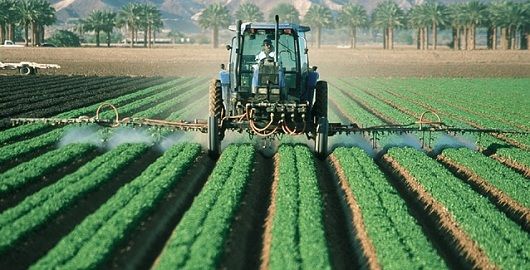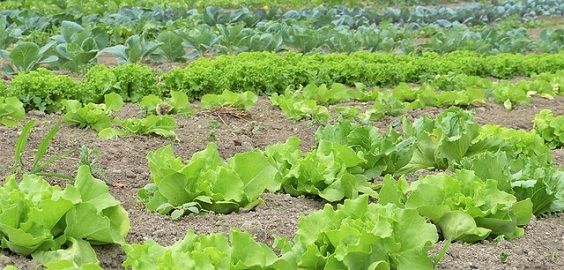How Commercial Farming vs Subsistence Farming Affects Food Safety And Security Worldwide
How Commercial Farming vs Subsistence Farming Affects Food Safety And Security Worldwide
Blog Article
A Thorough Take A Look At the Obstacles and Advantages of Modern Farming
Modern agriculture stands at the crossroads of advancement and sustainability, offering a plethora of opportunities and challenges. With improvements like precision farming and biotechnology appealing improved efficiency, the market simultaneously grapples with important concerns such as environmental deterioration and socio-economic differences. As we discover the detailed balance in between technical development and its wider impacts, the question arises: can we accomplish a lasting future that profits both the environment and farming areas? The course ahead demands a mindful exam of these characteristics, welcoming stakeholders to think about the potential for transformative adjustment in farming methods and plans.
Technical Developments in Farming
Technical innovations in farming have revolutionized the farming sector, driving raised efficiency and performance. Developments such as accuracy farming, automation, and biotechnology have actually changed conventional farming practices, enabling even more successful and lasting procedures. Precision farming uses GPS modern technology, sensors, and data analytics to maximize field-level administration concerning plant farming. This strategy allows farmers to apply inputs like water, plant foods, and pesticides a lot more judiciously, minimizing waste and decreasing costs while improving yields.
Automation in farming has even more thrust the sector forward, with the introduction of autonomous tractors, drones, and robotics. These innovations lessen labor needs and raise functional speed, permitting prompt planting and harvesting. Drones, specifically, supply useful aerial images and data, helping farmers in keeping an eye on crop health and wellness and finding concerns early.
Biotechnology has actually likewise played a crucial function beforehand agricultural practices. Genetically modified microorganisms (GMOs) have actually been created to boost plant resistance to diseases and pests, lower dependence on chemical therapies, and improve nutritional web content. This modern technology contributes to food safety and security and satisfies the demands of a growing global populace. Jointly, these technological advancements have actually prepared for a more durable and lasting farming future.
Ecological Obstacles
Agriculture deals with numerous ecological challenges that endanger its sustainability and performance. The lasting stability of farming land is endangered, requiring the adoption of even more sustainable practices.
Water shortage is another substantial difficulty, particularly in areas where agriculture heavily counts on watering. Climate adjustment is intensifying this problem, changing rainfall patterns and enhancing the regularity of droughts. Efficient water administration systems, such as drip watering and rain harvesting, are crucial to alleviate these results, yet their implementation remains unequal throughout different areas.
Furthermore, agriculture is both a victim and a factor to environment modification. It makes up a significant share of greenhouse gas discharges, primarily from animals production and rice cultivation. Transitioning to low-emission farming practices, such as accuracy farming and agroforestry, can help in reducing this effect. These methods require substantial investment and technological competence, positioning a barrier to widespread fostering. Attending to these environmental obstacles is essential for making sure a sustainable farming future.

Financial Influences
The financial impacts of modern-day agriculture are profound and diverse, affecting both local and international markets. Developments in innovation and manufacturing techniques have actually substantially raised farming productivity, bring about much more reliable food supply chains and decreased prices for consumers. This enhanced performance has actually made it possible for nations to fulfill growing demands, maintain food rates, and add to economic development. The export of farming assets has ended up being a considerable resource of revenue for lots of nations, playing a crucial function in their financial growth.
The capital-intensive nature of modern-day farming needs substantial investment in machinery, plant foods, and genetically changed seeds, which can be economically troublesome for small-scale farmers. In addition, international market variations can affect the success of agricultural exports, making economic situations reliant on farming vulnerable to financial instability.
Additionally, aids and trade plans in her response developed countries can distort market prices, affecting affordable balance and possibly disadvantaging farmers in establishing nations. In general, while modern-day agriculture drives financial development, it likewise requires browsing intricate financial landscapes to ensure fair and lasting development.
Social Ramifications
While contemporary agriculture has brought about considerable innovations, it likewise presents various social ramifications that warrant factor to consider. As company farming entities increasingly control the agricultural landscape, smaller ranches frequently struggle to contend, leading to the erosion of rural areas and standard farming techniques.

Furthermore, there are concerns regarding food safety and security and sovereignty. The concentrate on monoculture and genetically changed crops can undermine biodiversity and make food systems more susceptible to parasites and diseases. Such techniques could likewise restrict consumer selections and reduce the ability of regional communities to control their food resources. As these social effects unfold, it comes to be crucial to resolve them to guarantee equitable and lasting agricultural growth.
Future Directions
Looking ahead, numerous appealing avenues for modern-day farming can address the obstacles dealt with today while cultivating sustainable growth. Developments in check here modern technology, such as precision farming, offer the prospective to maximize resource usage and increase effectiveness. By using data analytics and machine understanding, farmers can make informed decisions pertaining to plant management, resulting in lowered input costs and decreased environmental effect. The integration of renewable energy resources right into agricultural techniques might considerably lower dependence on fossil gas and add to lower greenhouse gas emissions.
Biotechnology likewise holds tremendous guarantee for the future of agriculture. Genetically changed microorganisms (GMOs) and gene modifying methods, like CRISPR, might improve crop durability versus climate modification, bugs, and diseases, therefore boosting food security. Branching out crop ranges to include even more nutrient-dense and climate-resilient alternatives can reinforce both ecological stability and human nutrition.

Final Thought
Modern agriculture, identified by technical advancements, presents both chances and difficulties. commercial farming vs subsistence farming. Dealing with these complexities requires a change in the direction of lasting techniques that balance performance with ecological stewardship and social equity, therefore ensuring a resistant future for worldwide agricultural systems.
Modern agriculture stands at the crossroads of innovation and sustainability, offering a multitude of possibilities and difficulties. In addition, global market changes can impact the success of farming exports, making economic climates reliant on agriculture prone to economic instability.
Additionally, the extensive usage of modern technology and automation in agriculture has actually led to these details a reduction in agricultural employment chances.Looking ahead, a number of appealing avenues for modern-day farming can deal with the challenges encountered today while fostering lasting development. commercial farming vs subsistence farming.Modern agriculture, identified by technical innovations, provides both challenges and chances
Report this page